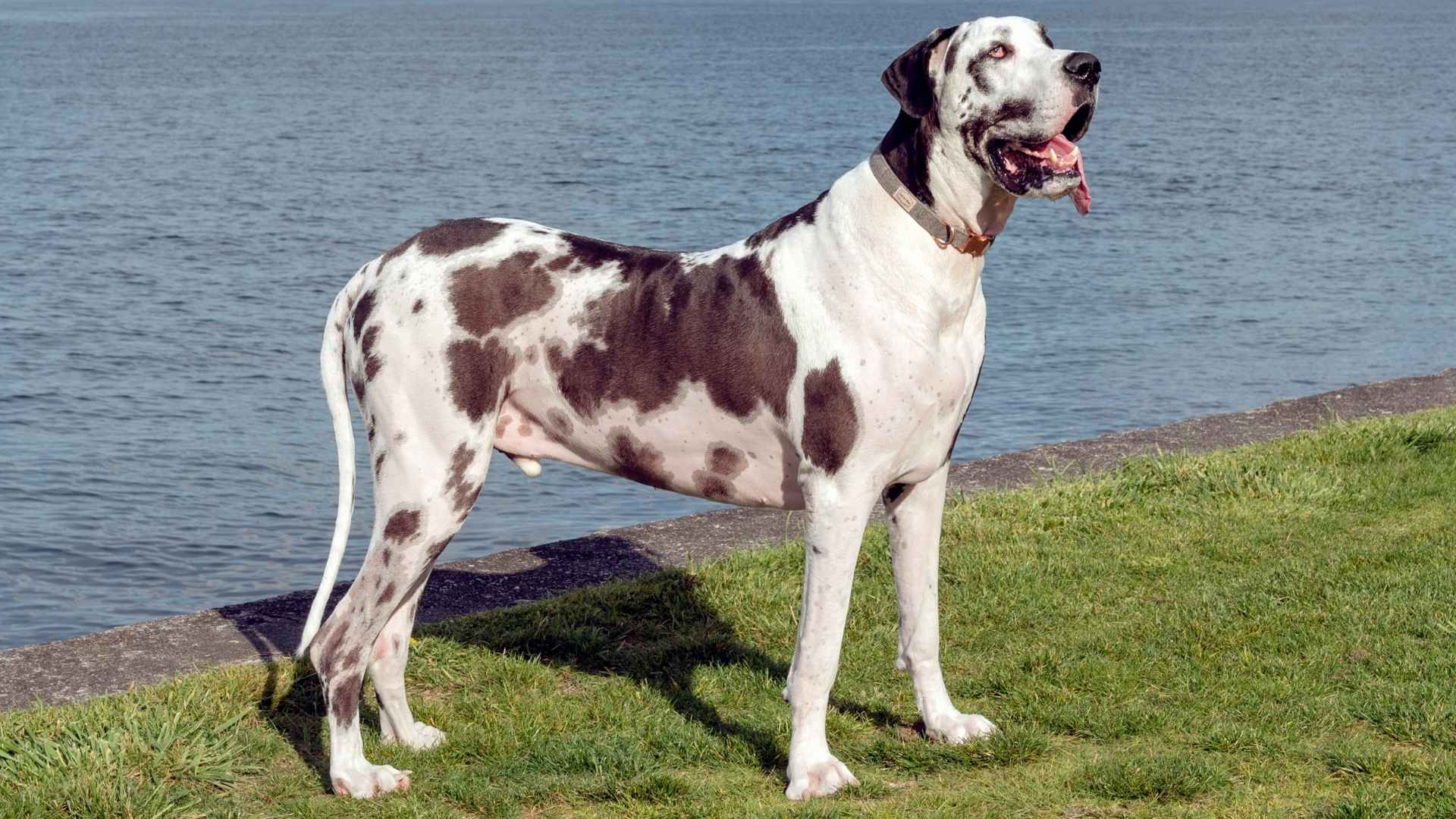While pint-sized pups may be perfect for lap cuddles and apartment living, there’s just something special about the mighty charm of XL Dog Breeds. These big beauties bring more than just size—they pack a powerful combo of loyalty, brains, and bold presence.
Whether it’s their natural guarding instincts or their watchful eyes that miss nothing, these giant guardians are always on high alert and ready to protect their pack.
Of course, life with an XL dog means embracing the big-dog lifestyle: roomy spaces, long walks, and plenty of belly rubs for your towering tail-wagger. But for those who can meet their needs, the reward is a heart as big as their paws.
From gentle giants with a protective streak to muscular watchdogs with calm confidence, we’re diving into the world of Alert XL Dog Breeds you’ll absolutely love. Ready to meet these powerful pups? Let’s get started—there’s a lot of dog to love!
Alert XL Dog Breeds
1. Great Dane
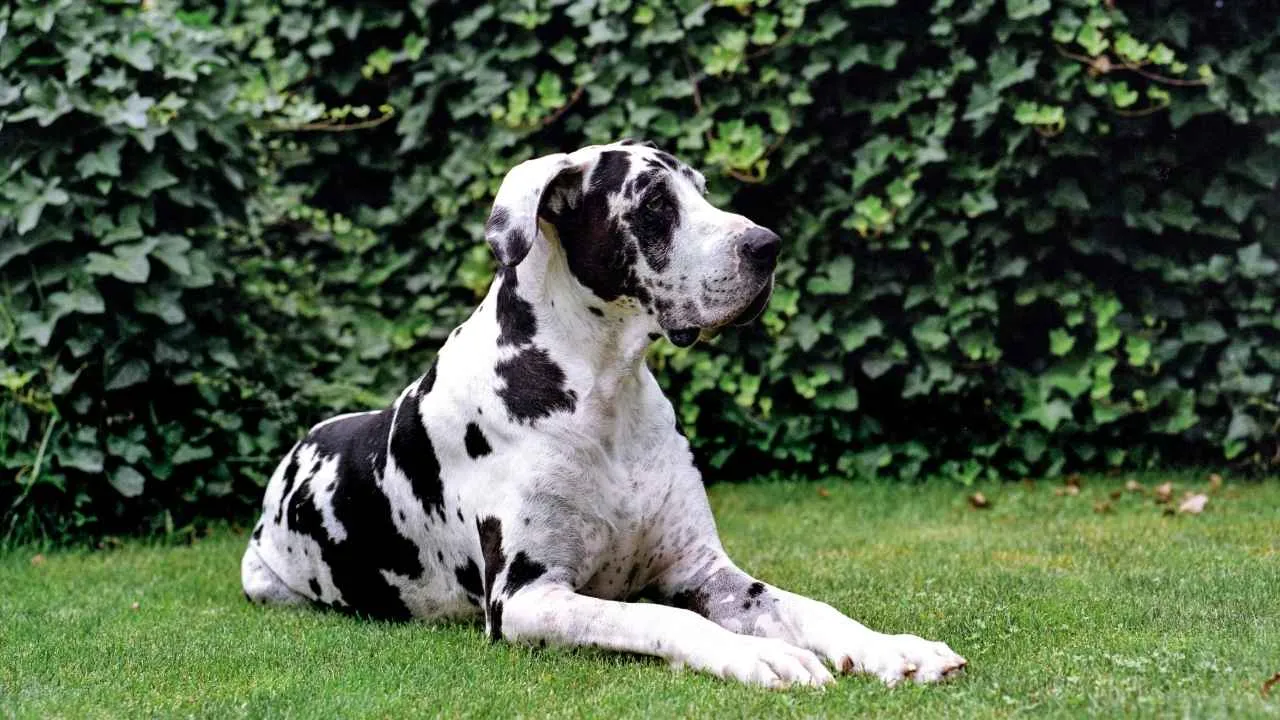
With roots going back over 400 years in Germany, the Great Dane was originally bred for hunting wild boar. Despite their fierce beginnings, today’s Danes are all about love and loyalty. These gentle giants are known for being dependable, affectionate, and surprisingly calm.
Great Danes are, without a doubt, huge. Males typically stand 30–32 inches tall and can weigh up to 175 pounds, while females average around 28–30 inches and top out at 140 pounds. These dogs aren’t just big—they’re enormous.
One Great Dane, named Kevin, even made headlines as the world’s tallest dog at over 3 feet tall on all fours.
Great Danes are sweet-natured and mellow. They’re friendly even with strangers and rarely bark unless there’s a real reason. They respond well to training, though patience is key—they’re more slow and steady than quick to catch on. Due to their size and strength, extra care is needed around small children or elderly family members who could get bumped by an enthusiastic greeting.
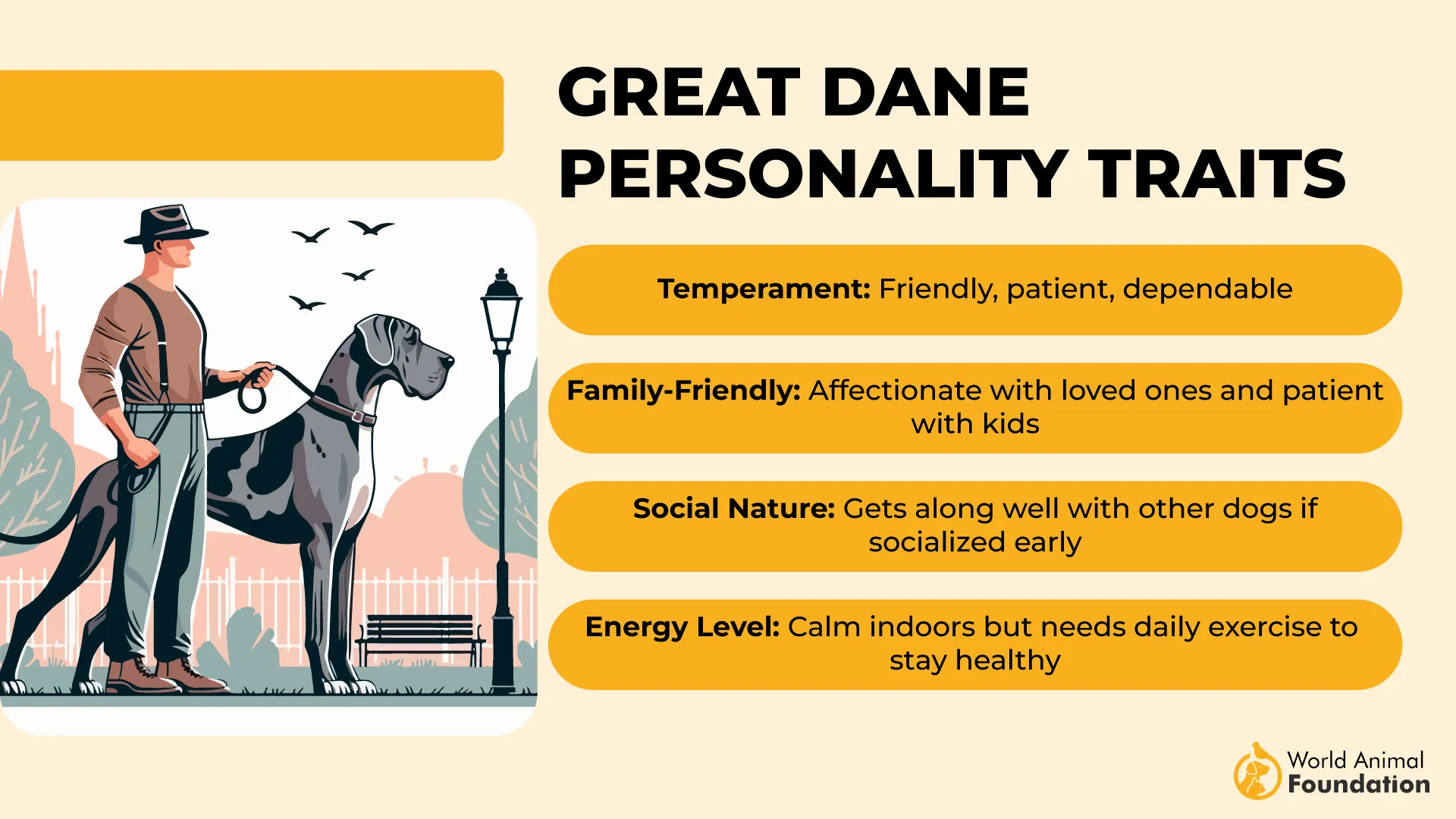
While they enjoy lounging, Great Danes still need regular exercise to stay healthy and happy. About two hours of movement daily is ideal—long walks, outdoor play, and space to stretch out. For puppies, activities should be gentle to avoid stressing developing joints and bones.
AKC describes this breed as the “Apollo of dogs.” Great Danes can be amazing family pets with the right socialization and structure. They thrive in homes with older kids and room to move. Just remember, their hearts are as big as their paws—they’ll want to be right by your side, whether you’re on the couch or out for an adventure.
Fun Fact:
Legend has it that Great Danes were the original ghostbusters of medieval times—released onto estates to chase away evil spirits, much like real-life Scooby-Doos with a serious job!
2. Borzoi
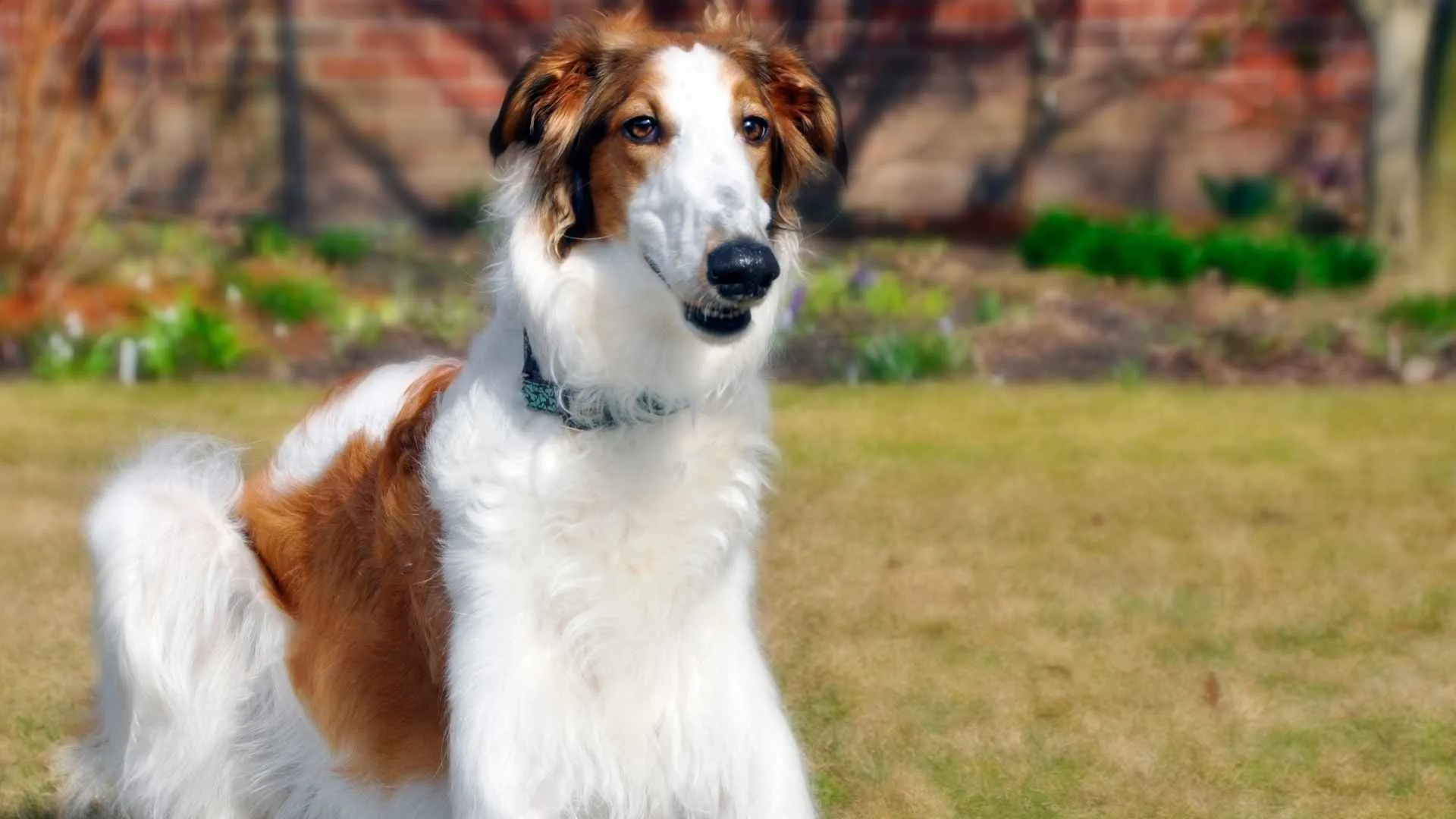
Once known as the Russian Wolfhound, the Borzoi is elegant on four legs, with a statuesque frame, flowing silky coat, and a regal air that reflects its noble roots. Originally bred to accompany Russian aristocrats on hunts, today’s Borzoi is more about couch cuddles than chasing wolves.
These graceful hounds are large but have gentle nature. Males stand around 28 inches tall and weigh 75–105 pounds, while females are slightly smaller at 26 inches and 60–85 pounds.
They move with quiet ease indoor,s but, due to their size and long limbs, they might accidentally knock over small children—best suited to homes with older kids or dog-savvy families.
As noted by WebMD, Borzois being a sighthounds, were made to chase, and that instinct still runs strong. A secure, fenced yard is essential, and off-leash freedom should be limited to enclosed areas. They thrive when given the chance to run at full speed—lure coursing is a great way to tap into that natural drive while giving them safe, structured exercise.
Borzois are smart but independent, often pausing to think before obeying. They’re not stubborn—they just like to weigh their options. Training works best with gentle guidance, consistency, and rewards they actually care about. Keep sessions short, light, and fun, and you’ll win their cooperation.
Though mellow indoors, Borzois still need daily activity. Around 30 minutes of free movement in a safe space usually does the trick. They’re not hyperactive, but without regular exercise, they can get bored or restless.

Loyal and affectionate, Borzois bond deeply with their families but appreciate calm environments. They’re sensitive souls—sweet and cuddly when treated with care.
Fun Facts:
“Borzoi” comes from the Russian word for “swift”—fitting, right?
Their heads can continue to grow and change shape for up to three years.
3. Scottish Deerhound
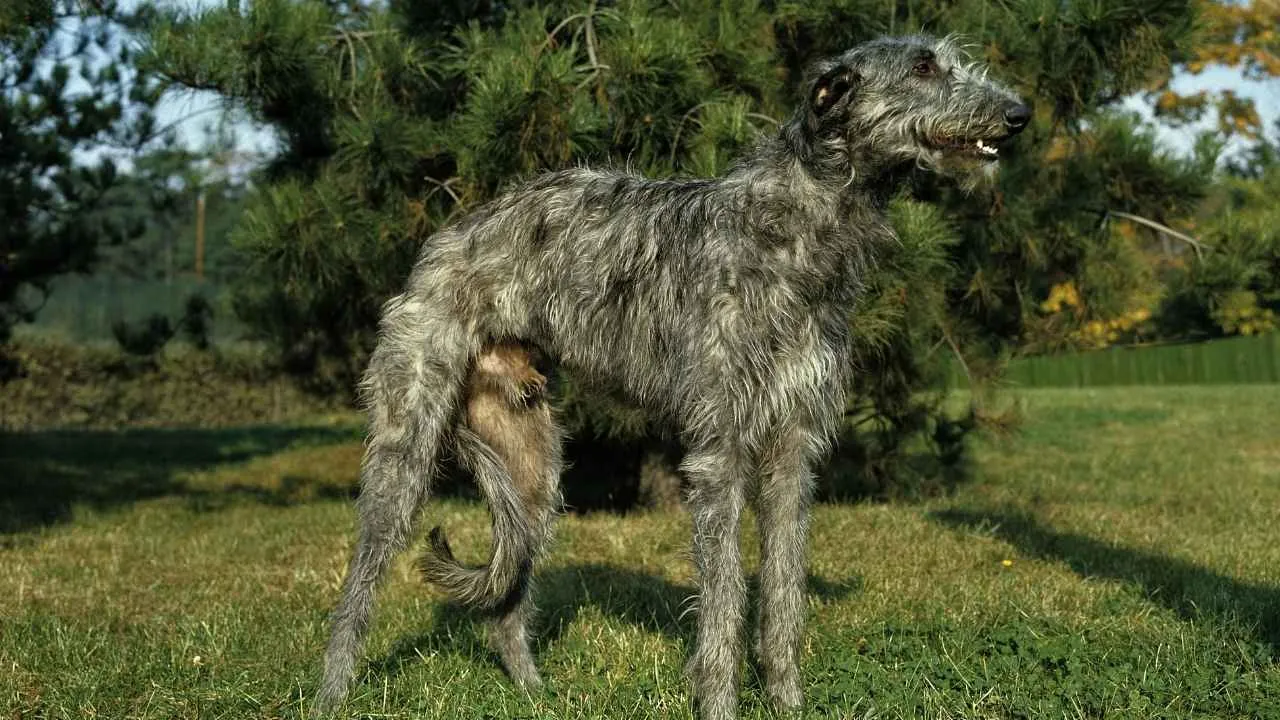
With its wiry coat, long limbs, and noble presence, the Scottish Deerhound looks like it walked straight out of a medieval storybook—and it kind of did. Once the prized hunting companion of Highland nobility, this elegant breed has traded the rugged hills for a cozy spot by your side, preferring naps to noble pursuits these days.
Often mistaken for a supersized scruffy Greyhound, the Deerhound is among the tallest dog breeds, standing 28–32 inches tall and weighing up to 110 pounds. Despite their impressive size, they’re quiet, gentle, and polite to a fault—more inclined to lean on you for affection than bark at the door.
Deerhound puppies are clumsy, fast-growing bundles of energy, often leaving a trail of chewed toys and playful chaos. With patience and positive outlets, that youthful energy settles into a calm, affectionate adult who enjoys outdoor play but is quiet and gentle indoors. They thrive on human companionship and do best in homes where they’re not left alone for long, especially without a fellow canine.
Deerhounds are gentle by nature, but their playful streak can get a little wild. With their size and strength, even friendly roughhousing can knock over a kid or spook a smaller pet. With early socialization and supervision, they grow into kind, relaxed companions who blend well into family life.
Like many large breeds, their time with us is shorter—usually 8 to 11 years. But in those years, they offer unwavering loyalty, quiet companionship, and a gentle spirit that leaves a big imprint on the heart.
Did You Know?
As classic sighthounds, Scottish Deerhounds are born to chase. If it moves, they’re on it—squirrels, cats, leaves, your neighbor’s RC car. And they’re fast—like, “run-a-mile-in-two-minutes” fast. Off-leash fun should only happen in fully fenced areas (we’re talking six feet tall minimum—no electric fences, please).
4. Irish Wolfhound
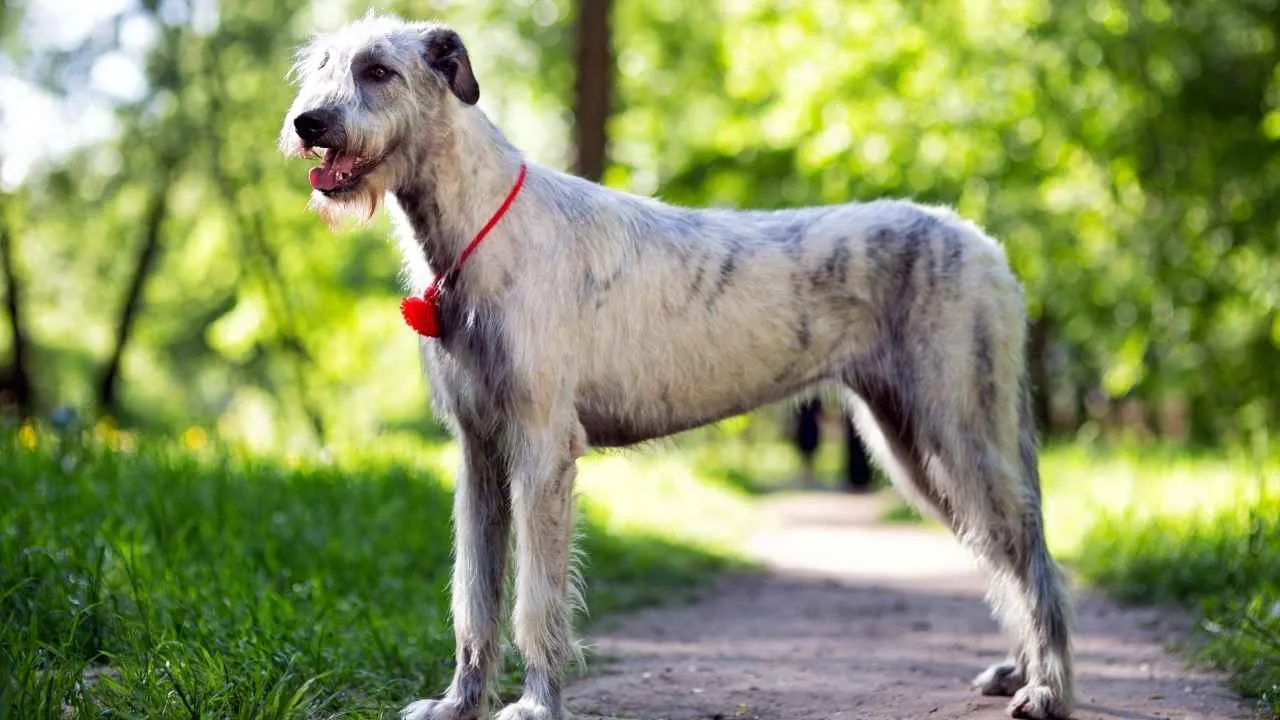
With roots in ancient Ireland, the Irish Wolfhound is a dog of legend—literally. Once gifted to Roman consuls by Irish nobles, these towering hounds left an empire awestruck. Known for being “gentle when stroked, fierce when provoked,” they were bred to take down big game like elk and wolves, combining strength with striking grace.
Irish Wolfhound males are the tallest of all hounds, standing up to 36 inches tall and weighing as much as 180 pounds. Despite their size, they’re not ideal service dogs—their delicate bone structure doesn’t support balance work. They need room to stretch, so they are not a good fit for apartment dwellers.
Though calm as adults, Irish Wolfhounds aren’t couch potatoes. They’re athletic, agile, and carry a strong chase instinct. Daily walks, backyard play, or even hikes keep them physically and mentally engaged. Just make sure they’re leashed or fenced in—these dogs won’t resist a running squirrel.
Their sheer size might be imposing, but these dogs are famously gentle and welcoming. They rarely bark, aren’t suited for guard duty, and prefer tail wags over confrontation. Loyal and affectionate, they thrive in homes that appreciate a calm, noble presence.
As noted by PetMD, health-wise, Irish Wolfhounds face challenges common to giant dog breeds. Bloat is a serious risk, along with heart disease, liver shunt, and bone cancer. Regular checkups, a proper diet, and awareness of warning signs can make a meaningful difference in their well-being.
Did You Know?
Legend has it that High King Cormac mac Airt once led an army of 300 Irish Wolfhounds. These dogs weren’t just fierce hunters—they were also prized companions and protectors. While today’s Wolfhounds don’t chase wolves or guard castles, they still bring a little royal magic into every home they grace.
5. Tibetan Mastiffs
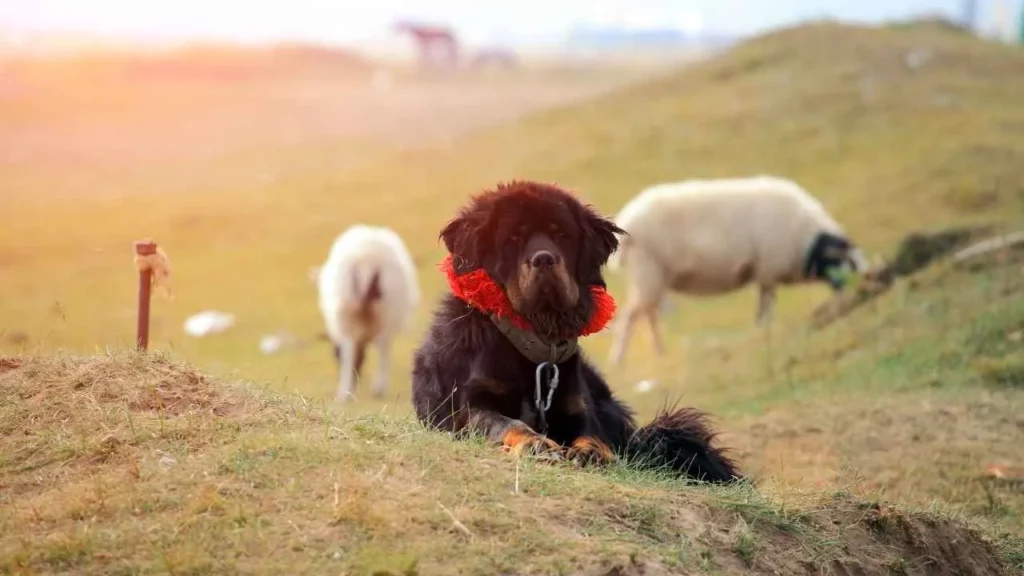
Meet the Tibetan Mastiff, an ancient breed, a guardian with a lion-like presence and a heart full of loyalty. Towering at up to 26 inches and weighing over 100 pounds, this breed is massive yet graceful, with deep-set brown eyes and a wise, watchful gaze that commands respect.
Tracing back nearly 3,000 years, Tibetan Mastiffs once guarded monasteries and livestock in the Himalayas. Even the Dalai Lama kept eight of them at his summer palace gates. Their legacy is one of loyalty, strength, and silent vigilance—a breed that watches over its family like a wise, fur-covered sentinel.
Noble and reserved with strangers but deeply affectionate with family, they embody the spirit of a calm but formidable protector.
PDSA states Tibetan Mastiffs are quiet, gentle giants who bond closely with their people, but don’t expect them to roll out the welcome mat for guests. Their guarding instincts are strong within their territory, though they tend to be more relaxed in unfamiliar settings. Early socialization is essential to help them develop balanced behavior and prevent them from becoming overly wary.
These giant dogs aren’t built for endurance or flashy obedience—they’re thinkers, not performers. They prefer short, purposeful activity over long runs, and while intelligent, their independent streak means they’ll only follow commands when it suits them. They thrive when given a job and space to observe, guard, or quietly supervise their world.
Because of their dominant nature, they often clash with dogs of the same sex. If you’re considering more than one dog, a pairing with the opposite gender usually works best. These natural leaders prefer peace in their domain, whether alone or with a compatible companion.
Fun Fact?
In a twist worthy of a crime novel, Tibetan Mastiffs found an unexpected role in the 1970s. Nepalese smugglers reportedly used them to sneak drugs into the U.S. via their crates—because, let’s face it, who’s volunteering to inspect a crate guarded by a 100-pound mastiff?
6. Leonberger
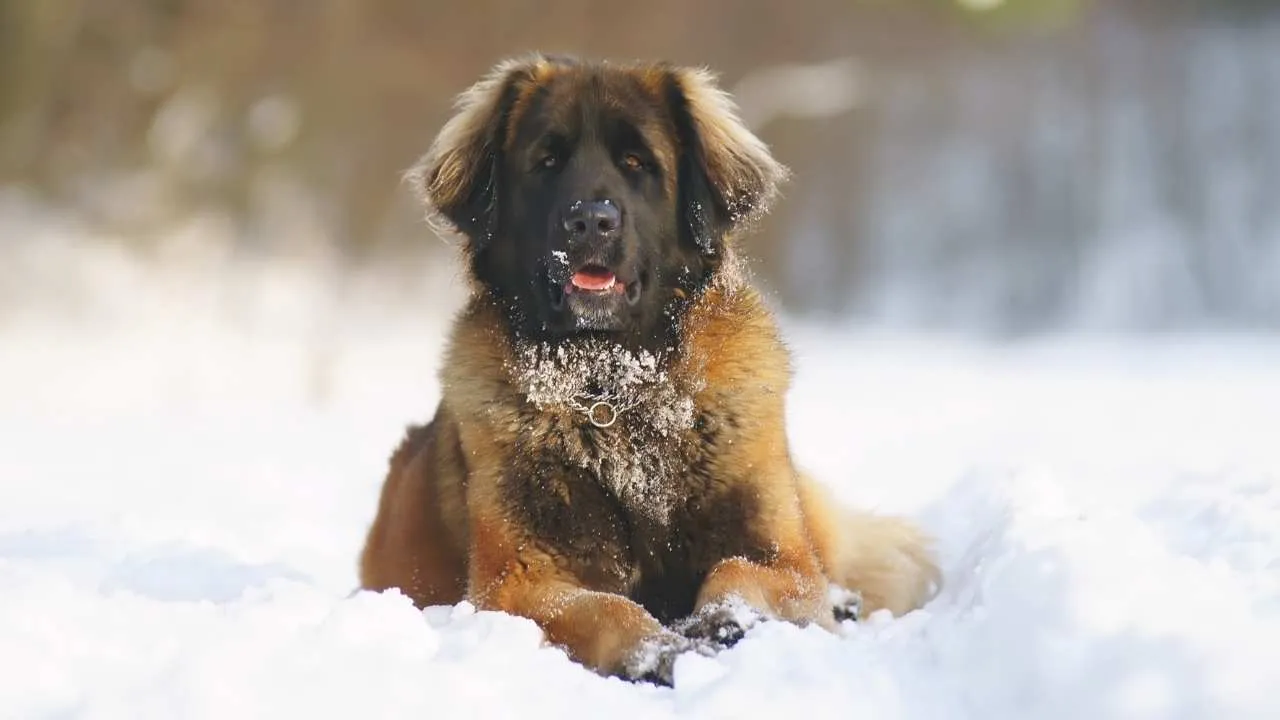
Say hello to the Leonberger—a majestic German breed named after the town of Leonberg and crafted in the 19th century by blending Landseer Newfoundland, Saint Bernard, and Pyrenean Mountain Dogs.
Bred to impress royalty, the Leonberger was adored by the likes of Napoleon III and Tsar Alexander II. Though nearly wiped out during the world wars, a handful of passionate breeders preserved their legacy.
These dogs don’t just show up—they make an entrance. Males can stand over 32 inches tall and weigh up to 170 pounds, with females close behind. Large dogs tend to have shorter lifespans—about seven years—but they make every moment count with unwavering affection and an ever-wagging tail.
Indoors, Leonbergers are calm and devoted, sticking close to their family. Outdoors, they turn into playful powerhouses who love water, snow, and mud. A quick walk won’t cut it—this breed needs room to move and a chance to get dirty, often enthusiastically so.
They’re intelligent but can be willful, so early socialization and positive training are essential. Leos enjoy having a purpose—whether it’s pulling a cart, joining in water rescues, or just mastering basic manners during a hike.
Expect at least an hour of daily activity to keep them content. While apartment living is possible for the highly active, Leonbergers generally thrive in homes with yards where they can stretch out and move freely.
7. Boerboel
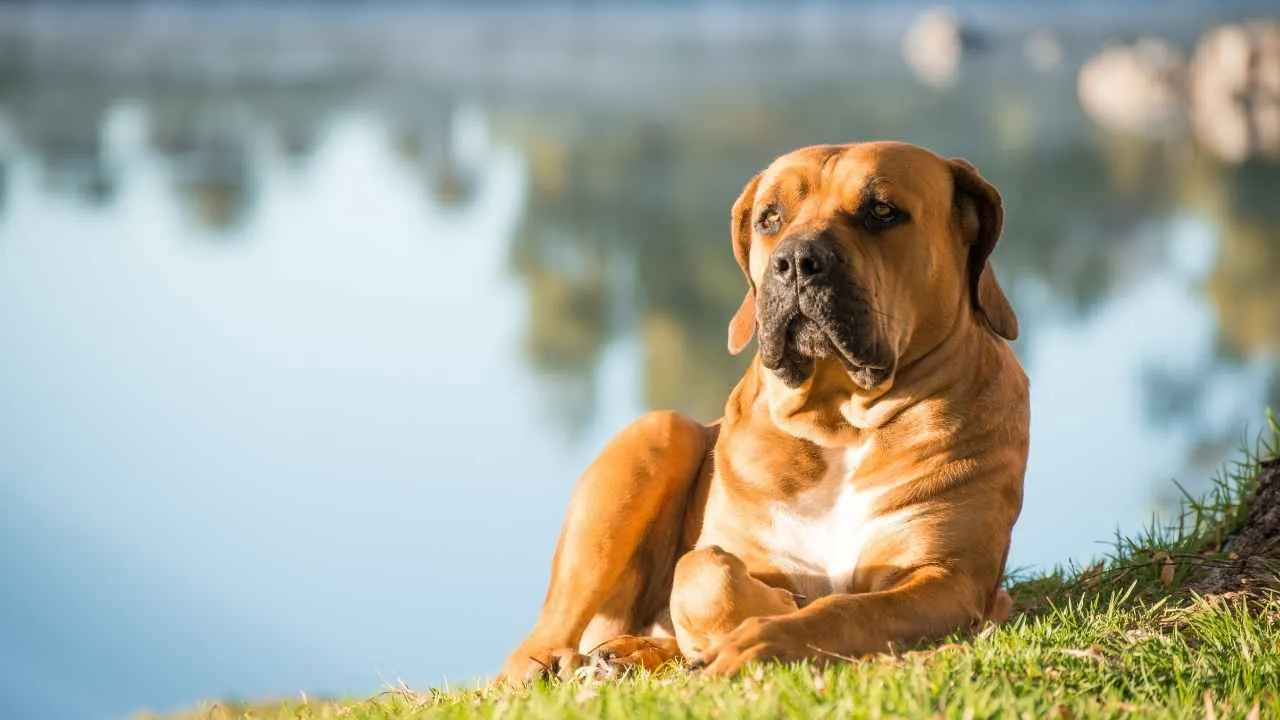
The Boerboel, or South African Mastiff, is an immensely strong and protective breed originally developed to guard farms against predators like hyenas and lions. Their name means “farmer’s dog” in Afrikaans—a nod to their strong working roots and loyalty to their home.
These muscular giants stand 22 to 27 inches tall and can weigh up to 200 pounds. Despite their intimidating size, Boerboels are loving and gentle with their families, especially children. However, they’re not ideal for first-time dog owners.
Their strength and intelligence require a confident, experienced handler who can provide structure and consistent training.
Boerboels are smart and capable learners, but can be independent and strong-willed. Early socialization is crucial to help them adapt to new people and environments. While they’re naturally protective, they aren’t aggressive without cause. They warm up to strangers once they know there’s no threat.
Regular grooming, weekly brushing, and occasional baths are sufficient. You’ll also want to keep up with nail trims and daily teeth brushing. Health-wise, they can be prone to bloat, hip and elbow dysplasia, and other large-breed conditions, so regular vet care is important.
Though they have a gentle side, Boerboels can be a handful without proper training. They bark and drool moderately and need plenty of mental and physical stimulation to stay balanced. This breed offers a rare combination of loyalty, strength, and heart—just be prepared for a big commitment, both literally and figuratively.
Conclusion
Throughout history, extra-large dog breeds have been valued for their strength, loyalty, and protective nature. From the thick-coated Bernese Mountain Dog and sturdy Great Pyrenees built for heavy work in cold weather, to the powerful French Mastiff and Alaskan Malamute, these giant breeds thrive with experienced owners who can provide ample outdoor space and daily grooming.
While some, like the Golden Retriever, are on the smaller side among XL breeds, they remain excellent companions. Whether in the UK or beyond, these massive dogs—whether new breeds or classics—are much more than their size. They are wonderful, devoted companions that bring unmatched presence and heart to any home.


